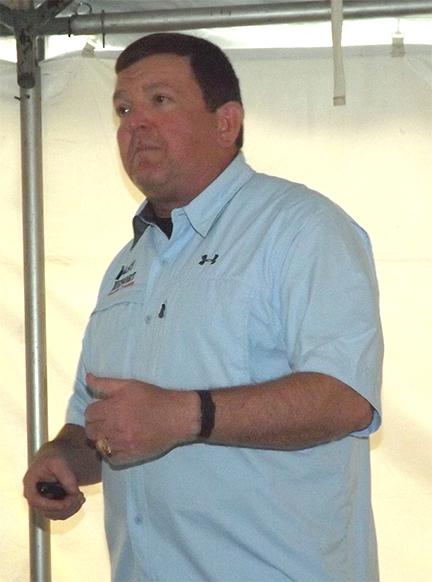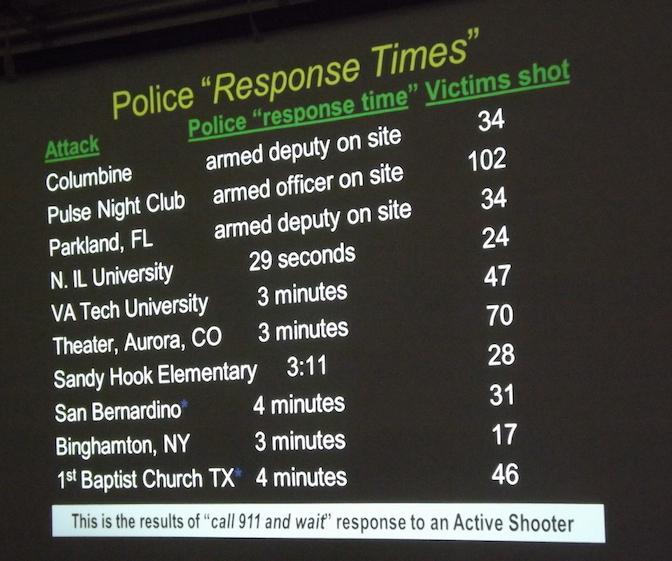 Guest Commentary
Guest Commentary
by Marty Hayes, J.D.
This past month, I attended the 20th annual RangeMaster Tactical Conference, where I joined about 200 other trainers and armed citizens for a three-day weekend of training. One of the training blocks was entitled Active Killer Response, taught by Lt. Col. (Ret.) Ed Monk who runs a training business in Arkansas called Last Resort Training. His presentation was nothing short of amazing, and dovetailed nicely with what I wrote last month regarding stopping school shootings.
His research into the phenomenon of not only school shootings but also mass shootings at malls, military bases and other places where large numbers of people gather is extraordinary. I would like to share with you (with his permission, of course) a few nuggets that struck me as very informative.
First, let’s discuss school shootings. Invariably, when there is a shooting at a middle school or high school, the shooter is a student or if more than one, the shooters are students of that school. Columbine is the perfect example.

This does not hold true for elementary schools, however, due to the age of the students. Overwhelmingly, the evidence shows that school shootings start either in the entry of the school or in the school cafeteria. The violence spreads to other parts of the school, mainly where students have been locked down in classrooms, when the shooter gains entry to the classrooms and it is easy to kill many students.
In school shootings, when confronted by armed individuals–whether law enforcement, school staff or other armed individuals–the shooter usually kills himself. Analysts speculate that in the recent Parkland, FL shooting, the shooter was unable to kill himself because of a malfunctioning firearm, and so was taken into custody. Not long thereafter, a student in Maryland got a Glock and started killing students in a high school. Deputy Blaine Gaskill of the St. Mary’s County Sheriff’s Dept. confronted him and fired one shot. The student fired a shot, too, at approximately the same time. As of this writing, that is all we know. We do not know if Deputy Gaskill fired the fatal shot, or the shooter killed himself. Historically this is what occurs: the school shooter is either killed or kills himself.
When a shooting starts, I learned from Col. Monk, on average, someone is shot every 10 seconds. That is an astounding statistic, and a bad one. It means that once the shooting begins, each ten second brings another casualty. A three-minute delay in response time by law enforcement means 18 casualties. In my neck of the woods, it would likely be at least ten minutes before law enforcement arrived. How many casualties is that?
After attending Col. Monk’s presentation, I am even more convinced that my idea about a national coalition of industry businesses, each putting in 1% of their gross receipts would be a great way to fund a campaign to put armed personnel–be it school staff, community volunteers or law enforcement–into our schools. An armed school shooter interceptor serving in each school in the nation is the only way to stop the slaughter.
I am writing this discussion of school shootings in this column as a continuation of my last editorial at https://armedcitizensnetwork.org/march-2018-editorial. You can see by the picture from Col. Monk’s presentation that calling 9-1-1 and waiting for police response is not the best answer to stopping school shooters and this is why I’m driven to find better solutions.
After publishing my commentary last month, I received 25 separate responses, and most were in support with some very helpful additional suggestions. At some point, I will organize this valuable input and put your responses into a cogent compilation. In the meantime, I will be looking at ways to take the idea to the next step. I would like to see an industry leader or two embrace the idea and take it forward. Frankly, I do not have the ability to build the American Coalition To Stop School Shootings–ACTSSS–alone. Others who have a passion to make it happen are needed to take the idea and run with it. If you or anyone you know has any contacts in the industry that might want to get involved, please contact them and run it by them. I do not expect to let the idea languish, but I also don’t want to try single-handedly to get it going and have it fail for lack of momentum.
To read more of this month's journal, please click here.
